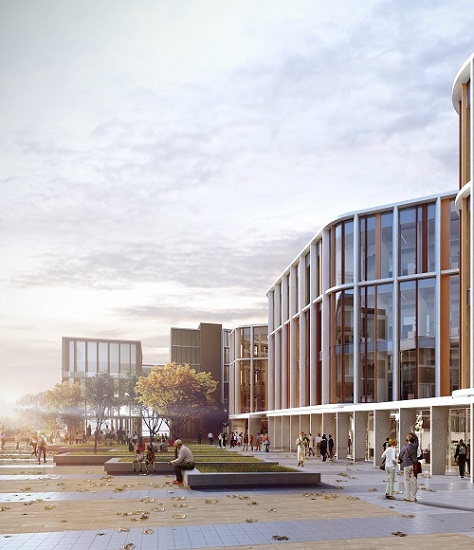Research Hub – update on the outcome of the consultations
Published: 1 October 2018
Feedback on results of July's consultation into Research Hub spaces.
 Research Hub – update on the outcome of the consultations
Research Hub – update on the outcome of the consultations
In July we held a series of consultations on the new Research Hub. With 30% of the building made up of seminar rooms, exhibition spaces and meeting rooms available to the entire university community, the consultations were about getting these spaces right.
Over the course of nine separate sessions, we tried to get the answers to a lot of questions: What do you know about the Hub already? What kinds of spaces do you need? What sorts of activities would you attend in the Hub? How do we create the kinds of spaces that will encourage you to use the Hub? Essentially, how do we make the Hub a space that helps connects all the members of the University community? We heard from 123 of you, in person, in e-mail, in phone calls - and now we’d like to tell you what we learned and the changes we are making.
What is the Hub?
The main message that came through was that many of you don’t really know what the Hub is and what it’s for. This update is the first of a series that will provide more information about the Research Hub, its aims and ambitions.
Overall, the Hub aims to be a catalyst for new interactions– across the Research Theme members based there full-time, the staff and students who use it regularly for training and engagement, the members of the community who drop in to attend events and exhibitions. The Hub will provide spaces and facilities that should support all the members of the University of Glasgow community, getting them right is critical.
A diverse building
It was also clear that, despite being intended for the full range of disciplines, the visuals and design of the Hub didn’t feel that way – many of you commented on it appearing clinical and STEM-oriented (one participant described it as “hospital chic”).
Following this feedback, we are working with the architects to get the interior design and spaces to reflect the diversity of the communities that will be using the spaces. Over the coming months we will be sharing new visuals to show how seriously we take your views on this point.
Getting the spaces right
The consultations also looked at the spaces themselves, and new floor plans are currently being drawn up by the architects to reflect your input.
Following your feedback the two large PGR spaces that were initially planned for the Upper Ground level (which houses our main engagement spaces, seminar rooms, and is open to the public) are moving to the research floors, enabling PGRs to co-habit with the research teams. The ground floor footprint they leave behind will be converted into seminar/training rooms.
You also requested a large, messy space for arts-practitioners and engagement teams. The architects have been asked to create a space on the Upper Ground floor and we are hopeful this can be accommodated.
Functionality
Overall, much of the feedback we received was about requirements for the spaces themselves and how they will operate to make them functional – bookable collaboration spaces with white-board walls; good sound barriers between flexible seminar rooms; quiet working areas and chatty collaborative workspaces that can suit multiple working styles; desks for people based at remote campuses to use when working at Gilmorehill; easy-to-use booking systems. This is all being taken into consideration as we start to develop the operational plans for the building and will be the focus of more consultations in the coming months (details will be advertised in due course).
This update was prepared by Mary Ryan, International Development Coordinator and co-Lead on the Hub’s Connecting the University Community workstream.
First published: 1 October 2018

